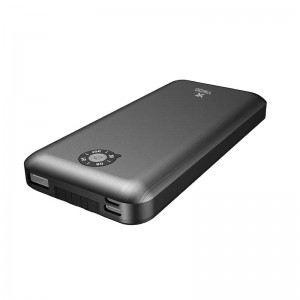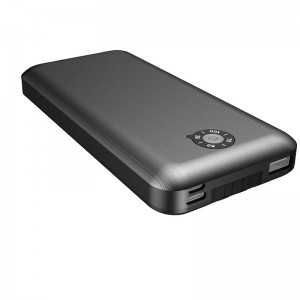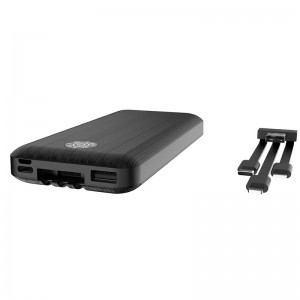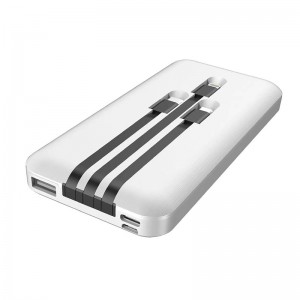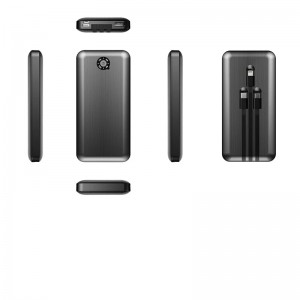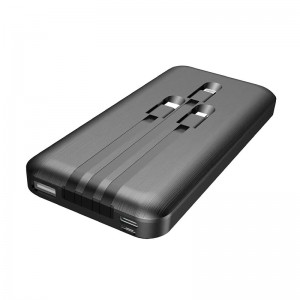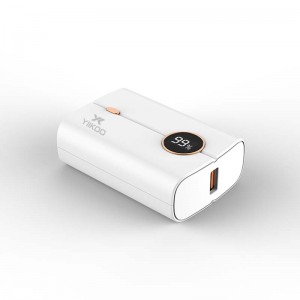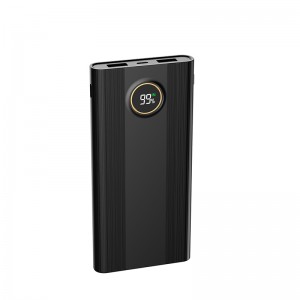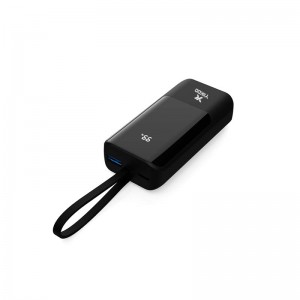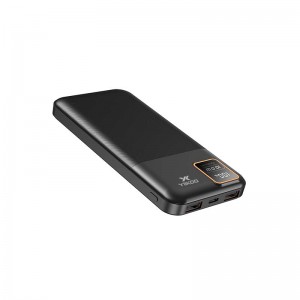Mini Portable Powerbanks 10000mah Power Bank Mobile Charger Power Bank With Led Light Built in cables Y-BK004
Product parameter characteristics
| Capacity | 10000mAh |
| Micro Input | 5V/2A |
| Type-C Input | 5V/2A |
| USB-A1 Output | 5V/2.1A |
| Lightning Cable Output | 5V2A |
| TYPE-C Cable Output | 5V2A |
| Micro Cable Output | 5V2A |
| Total Output | 5V2.1A |
| Power display | Digital display |















Description
There are several types of power banks available in the market. Here are the most common types:
1. Portable power banks: These are the most common type of power banks you will find. They come in several sizes, from small pocket-sized power banks to larger ones that can charge multiple devices. Portable power banks are ideal for anyone who wants a power bank that is easy to carry around and can charge their devices on the go.
2. Solar power banks: These are power banks that use solar panels to generate electricity. Solar power banks are ideal for anyone who is hiking, camping or spending time in locations where access to electricity is limited. These power banks come with solar panels, which can charge the power bank, allowing you to charge your device using renewable energy.
3. Wireless power banks: These power banks use wireless charging technology to charge devices without the need for cables. You simply place your device on the power bank, and it will start charging. These power banks are ideal for anyone who wants a hassle-free charging solution.
When choosing a power bank, it is important to consider your specific needs and requirements. Consider what devices you need to charge, and how frequently you need to charge them. This will help you choose a power bank that is the right size and capacity for your needs.
1. Capacity: A power bank's capacity is measured in milliampere-hours (mAh), and refers to the amount of charge the power bank can hold. The higher the capacity, the more times you can charge your device before the power bank needs recharging. It is important to choose a power bank with a capacity that is suitable for your needs.
2. Output voltage and amperage: The output voltage and amperage of a power bank determine how quickly it can charge your device. A power bank with a higher output voltage and amperage will charge your device faster. However, it is important to ensure that the power bank's output voltage and amperage are compatible with your device. Most devices require a 5V output voltage, but some may require a higher output voltage.
3. Portability: Portability is an important factor to consider when choosing a power bank. If you plan to carry your power bank with you on a regular basis, it is important to choose a power bank that is small and lightweight.
4. Price: Power bank prices vary depending on the brand, capacity, and features. It is important to choose a power bank that fits within your budget, without compromising on quality and reliability.



